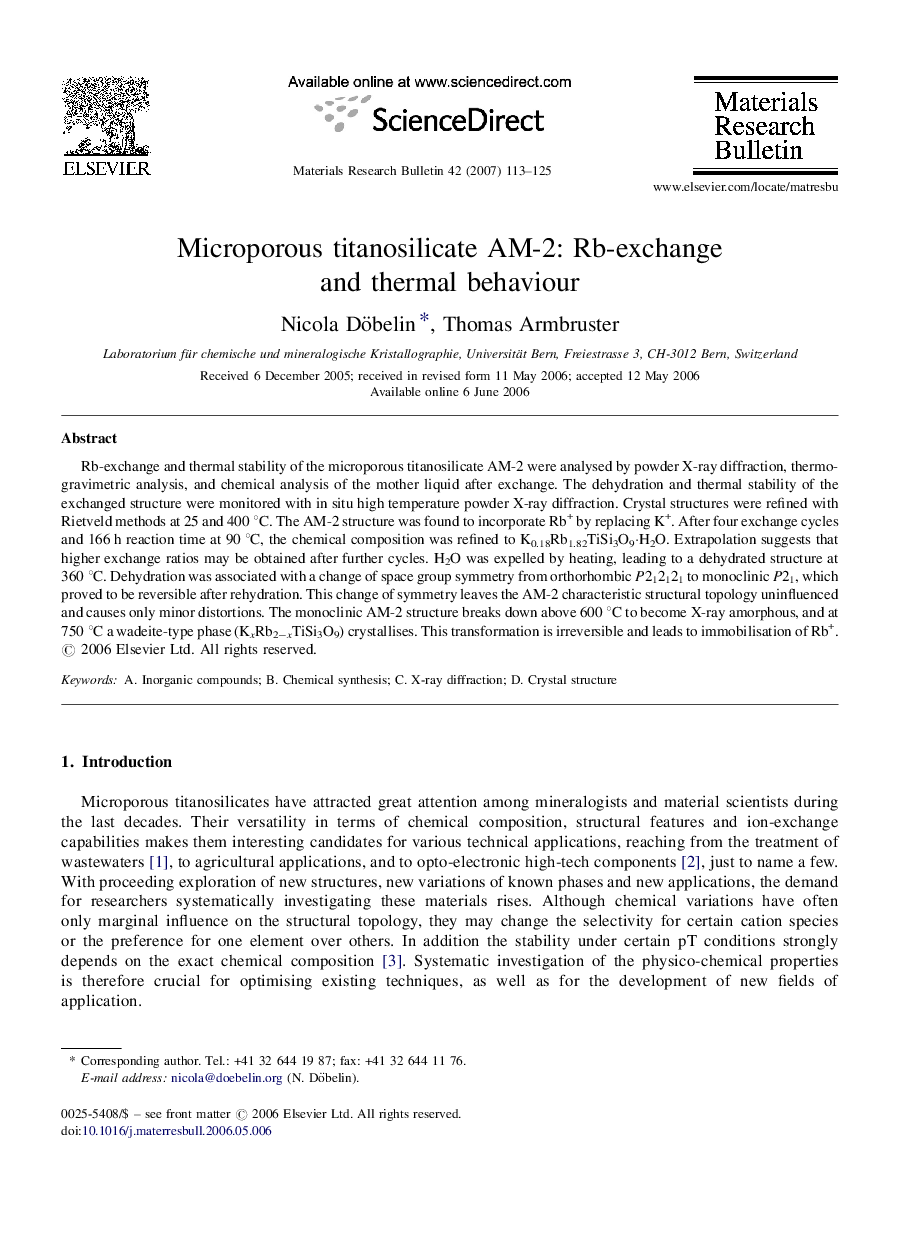| Article ID | Journal | Published Year | Pages | File Type |
|---|---|---|---|---|
| 1492643 | Materials Research Bulletin | 2007 | 13 Pages |
Rb-exchange and thermal stability of the microporous titanosilicate AM-2 were analysed by powder X-ray diffraction, thermo-gravimetric analysis, and chemical analysis of the mother liquid after exchange. The dehydration and thermal stability of the exchanged structure were monitored with in situ high temperature powder X-ray diffraction. Crystal structures were refined with Rietveld methods at 25 and 400 °C. The AM-2 structure was found to incorporate Rb+ by replacing K+. After four exchange cycles and 166 h reaction time at 90 °C, the chemical composition was refined to K0.18Rb1.82TiSi3O9·H2O. Extrapolation suggests that higher exchange ratios may be obtained after further cycles. H2O was expelled by heating, leading to a dehydrated structure at 360 °C. Dehydration was associated with a change of space group symmetry from orthorhombic P212121 to monoclinic P21, which proved to be reversible after rehydration. This change of symmetry leaves the AM-2 characteristic structural topology uninfluenced and causes only minor distortions. The monoclinic AM-2 structure breaks down above 600 °C to become X-ray amorphous, and at 750 °C a wadeite-type phase (KxRb2−xTiSi3O9) crystallises. This transformation is irreversible and leads to immobilisation of Rb+.
